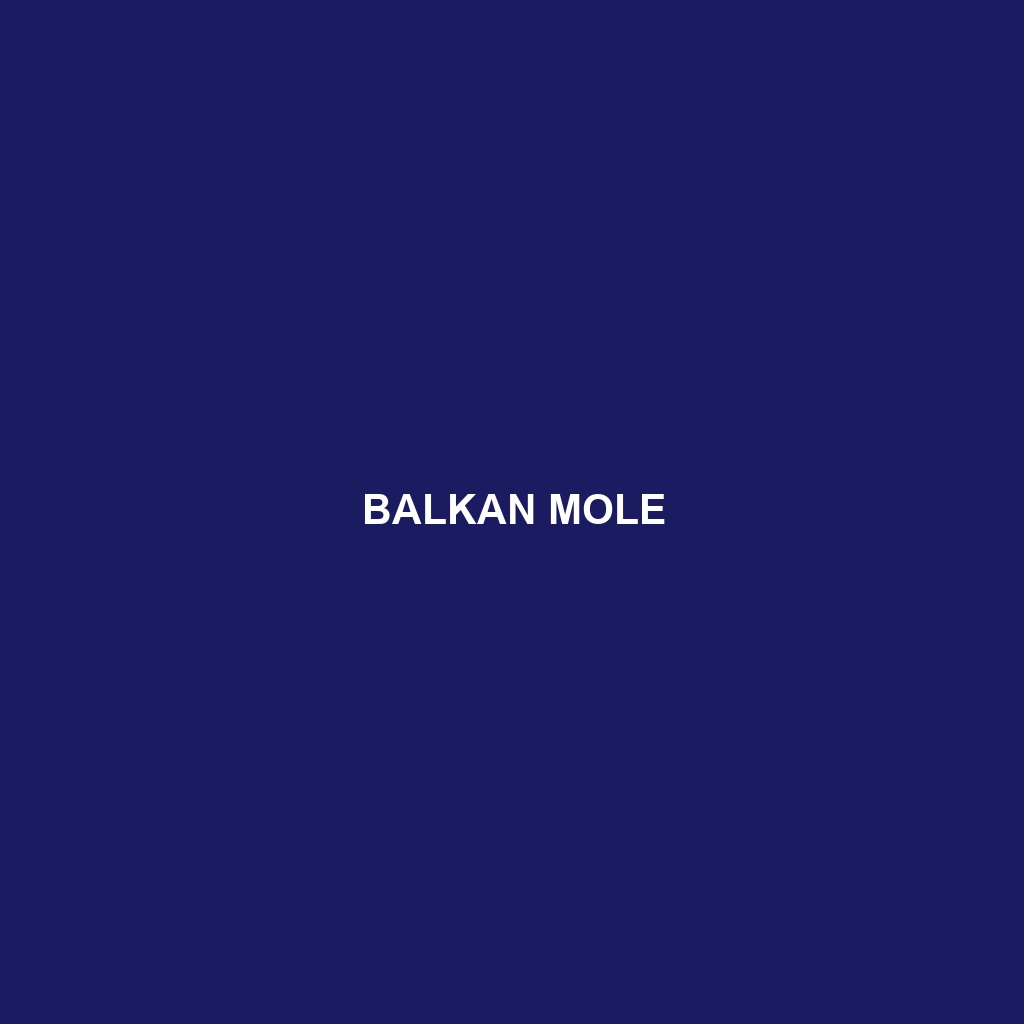Balkan Mole (Scientific Name: Talpa europaea)
Common Name: Balkan Mole
Scientific Name: Talpa europaea
Habitat
The Balkan Mole is primarily found in the Eastern and Southeastern regions of Europe, particularly in countries such as Bulgaria, Romania, and Serbia. It prefers moist, loamy soil in forested areas, grasslands, and agricultural lands. This habitat supports the mole’s burrowing lifestyle, allowing it to thrive in environments with ample earthworms and insects.
Physical Characteristics
The Balkan Mole typically measures between 15 to 20 cm (6 to 8 inches) in length, with a compact body and a weight of about 100 to 150 grams (3.5 to 5.5 ounces). Its fur is dense and velvety, ranging from dark brown to a lighter shade of grey, providing excellent insulation. Notable features include its large, spade-like forelimbs adapted for digging and its small, nearly non-existent eyes, which reflect its underground lifestyle.
Behavior
Balkan Moles are primarily solitary animals, known for their extensive tunneling behavior. They are crepuscular, meaning they are most active during the early morning and late afternoon. These moles communicate through a series of high-pitched squeaks and scent markings. They spend most of their lives underground, where they construct a complex network of tunnels that can extend for several hundred meters.
Diet
The diet of the Balkan Mole consists primarily of earthworms, insects, and other invertebrates. Their foraging techniques include using their sensitive snouts to detect movements in the soil. This diet plays a significant role in controlling soil insect populations and aerating the earth through their tunneling efforts.
Reproduction
Balkan Moles typically breed once a year, with the breeding season occurring in late winter to early spring. After a gestation period of about 30 days, females give birth to a litter of 2 to 6 pups. The young moles are born blind and are nurtured in the safety of the burrow until they begin to venture out at around 3 to 4 weeks of age.
Conservation Status
The current conservation status of the Balkan Mole is classified as ‘Least Concern’ by the IUCN. However, habitat destruction and pesticide use pose potential threats to their populations, making ongoing monitoring essential to ensure the stability of their environments.
Interesting Facts
One fascinating aspect of the Balkan Mole is its ability to dig through the soil at an impressive rate of up to 30 meters (98 feet) per hour. Moreover, moles have a unique adaptation in their blood that allows them to thrive in low-oxygen environments while burrowing deep underground.
Role in Ecosystem
The Balkan Mole plays a critical role in maintaining the health of its ecosystem. By aerating the soil through their burrowing activities, these moles improve water infiltration and promote nutrient cycling. Additionally, as they feed on insects, they help control pest populations, contributing to a balanced ecosystem.
This content is optimized for search engines while providing a comprehensive overview of the Balkan Mole, incorporating relevant keywords, and ensuring clarity and engagement for readers.
